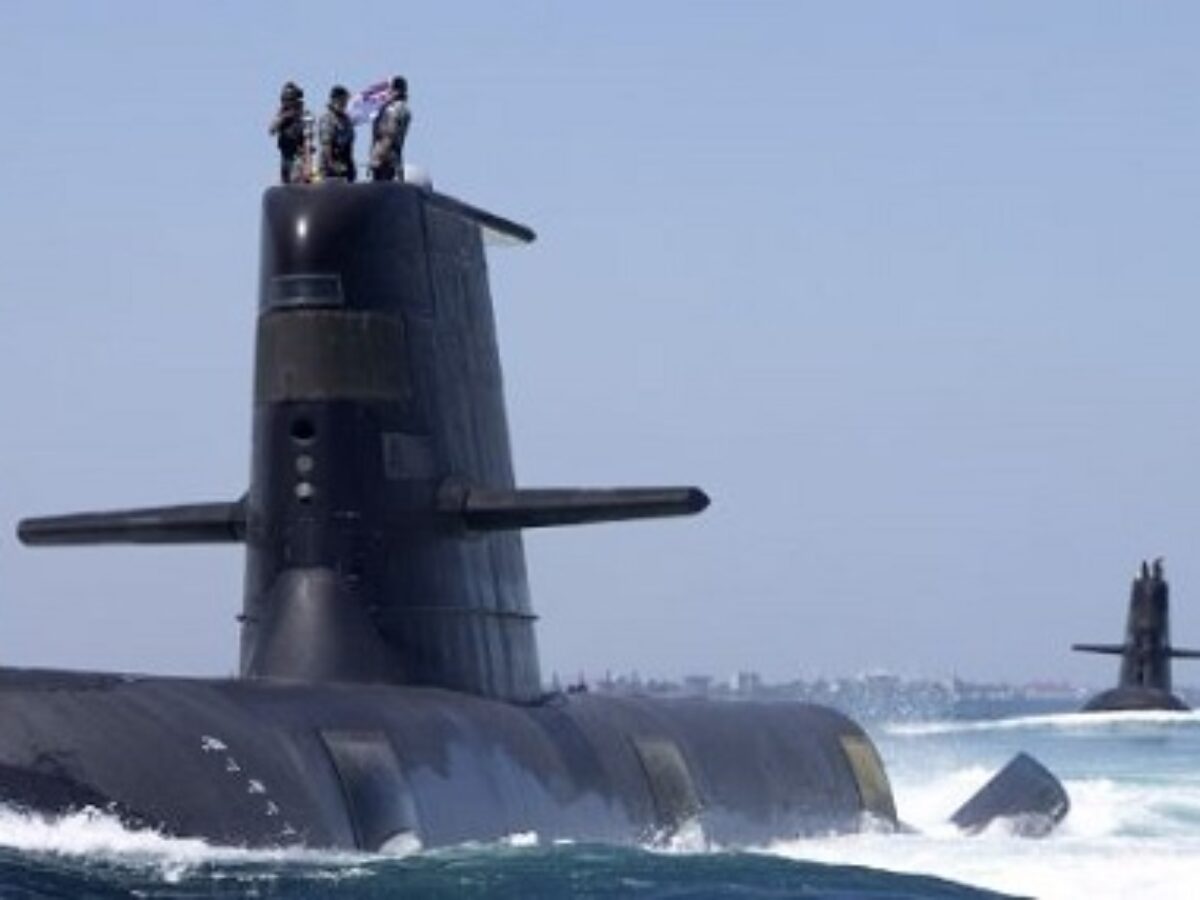Celebrating Australian sovereign capability – how to not create a sovereign manufacturing sector

Australian Prime Minister Anthony Albanese has committed the country to purchasing US and UK submarine technology with strong support from the Opposition, as part of the AUKUS agreement. This is the latest chapter in a decades long – and spectacularly unsuccessful – effort to establish an Australian sovereign submarine design and manufacturing enterprise. Peter Roberts reports.
There have been a number of times in Australia’s history when governments attempted to create sovereign industrial capability, and none moreso than in the key role that submarines play in maritime defence.
The Collins class project was established by the Royal Australian Navy (RAN) in 1982 to follow up on our UK-built Oberon vessels, and was a genuine attempt to create a new industry in Australia – that of submarine design and construction.
The political brains behind the initiative was then defence minister Kim Beazley, who envisioned an Australian owned, led and domiciled company that would build over time build up the capabilities to create its own submarines.
We had always imported our submarines previously, and there was very limited experience and skills in country to make it happen.
After a competition to find a willing partner who would share their know how with Australia, Beazley turned to Sweden’s Saab Kockums shipyard in Sweden as the best partner, a company which had been building submarines since 1915.
But Swedish submarines operating close to their bases in the Baltic had a completely different mission profile to those needed by the RAN – ours had to be capable of operating in surveillance mode for very long periods, a long way from Australia’s bases.
This necessitated the construction of a much larger submarine, and one which was operationally similar to US vessels – as Australia was increasingly striving for interoperability between our ships and those of our closest ally.
A new company the government-owned Australian Submarine Corporation was established and a brand new shipyard constructed on the banks of the Port River at Osborne in Adelaide.
Between 1996 and 2000 six Collins class submarines were were rolled out onto the shiplift and lowered into the water at Osborne.
It was a vast challenge building an extremely complex vessel such as a submarine in a nation that had never built one.
Whole areas of technology were then, just as today, missing from the submarine construction chain.
Training enough people with the skills capable of welding a submarine hull – essentially a huge pressure vessel – was an issue as every centimetre of every weld had to be tested and retested to ensure there were absolutely no faults.
One major challenge, met by Australian steelmakers BlueScope and Bisalloy, was the manufacture of the special steels needed for the hull.
Locally developed systems such as sonars and even the anechoic hull coatings to reduce sonar signal returns were a feature.
And new facilities were built for specialist needs such as battery manufacture and periscope development.
It was learning by doing – and Beazley’s intention was that once the Collins vessels had been built, follow on submarine construction would be possible – this time based on indigenous Australian skills and technologies in Adelaide and elsewhere.
However there were some early issues with the Collins’ propulsion system, and later with its computing technology which was outdated by the time it came into service – personal computers were still rapidly developing at the time.
Issues with the effective maintenance of the vessels by the government owned company now called by the initials ASC, added to its woes.
This caused a loss of faith in Australian industry, exemplified by the 2014 comment by then Liberal Defence Minister David Johnston who warned that he would not trust the ASC to build a canoe.
The fact that Johnston himself was the minister responsible for the ASC, and should have taken action to rectify the problem if he had detected one, was a side issue in a cynical politicisation of defence industry that cost Johnston his job.
In the end after modifications, the conventionally powered Collins vessels proved to be extremely capable, able to mix it with the US nuclear powered fleet in joint exercises.
This led to a Future Submarine programme being launched in 2007 with ASC to design and build a follow on submarine fleet.
But the damage to the programme had already been done and the dream of a viable submarine design and construction industry faded away.
Without a new class of submarine to work on, ASC shrank in size and capability, so much so that the Western Australian government mounted a concerted campaign, ultimately unsuccessful, to usurp ASC’s role as deep maintenance provider for the fleet.
The original selection of Adelaide as the site for submarine construction was heavily influenced by politics, as was the Coalition’s delay in resolving the issue of the maintenance site.
Then first Labor, and then the Coalition compounded the issue by delaying the selection of a replacement for Collins.
As each year passed, much of what had been built up over such a long time, and at such a great expense was eroded.
By the time the federal government signed a strategic partnership agreement with France’s Naval Group in 2019 to construct conventionally powered Attack-class submarines in Adelaide, ASC was left out of the picture.
The travails of the Attack programme, and its ultimate replacement with plans for a nuclear powered vessel design sourced from the US and later the UK under the AUKUS agreement, are well known.
The bottom line of this debacle was a massive capability gap had opened up for the RAN between the retirement of the ageing Collins class and any replacement.
It would be hard to imagine any government programme being started offering so much – but ending up delivering so little of lasting value.
Already cynics are loudly questioning whether Australia really can construct its own nuclear powered submarines.
One wonders at the motivations of people, mostly without any relevant background or knowledge, who so easily second guess the experts.
The track record suggests Australia can, and will construct our own nuclear fleet, given time and goodwill.
After all, we know exactly how not to do it now.
Picture: Navy.gov.au/Guided missile submarines, diesel-electric (SSG) at sea
@AuManufacturing’s editorial series – Celebrating Australian sovereign capability – is brought to you with the support of Nova Systems and Titomic.
Topics Defence Manufacturing News
@aumanufacturing Sections
Analysis and Commentary Awards Defence Manufacturing News Podcast Technology Videos








